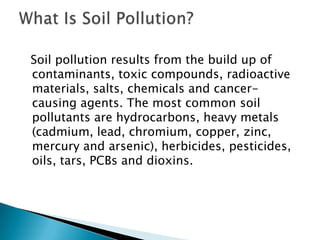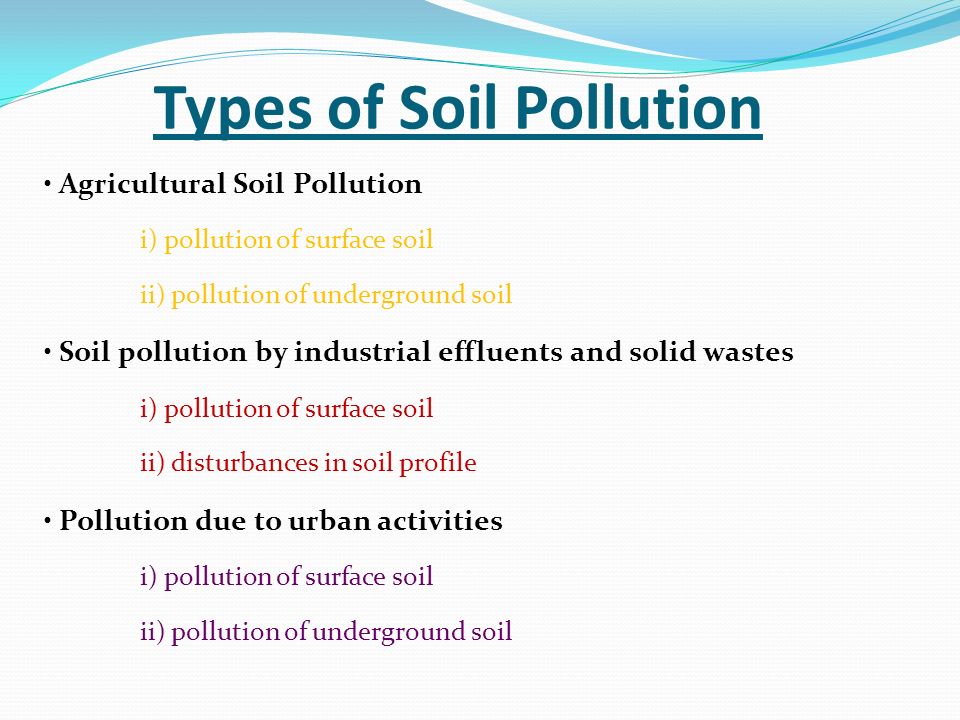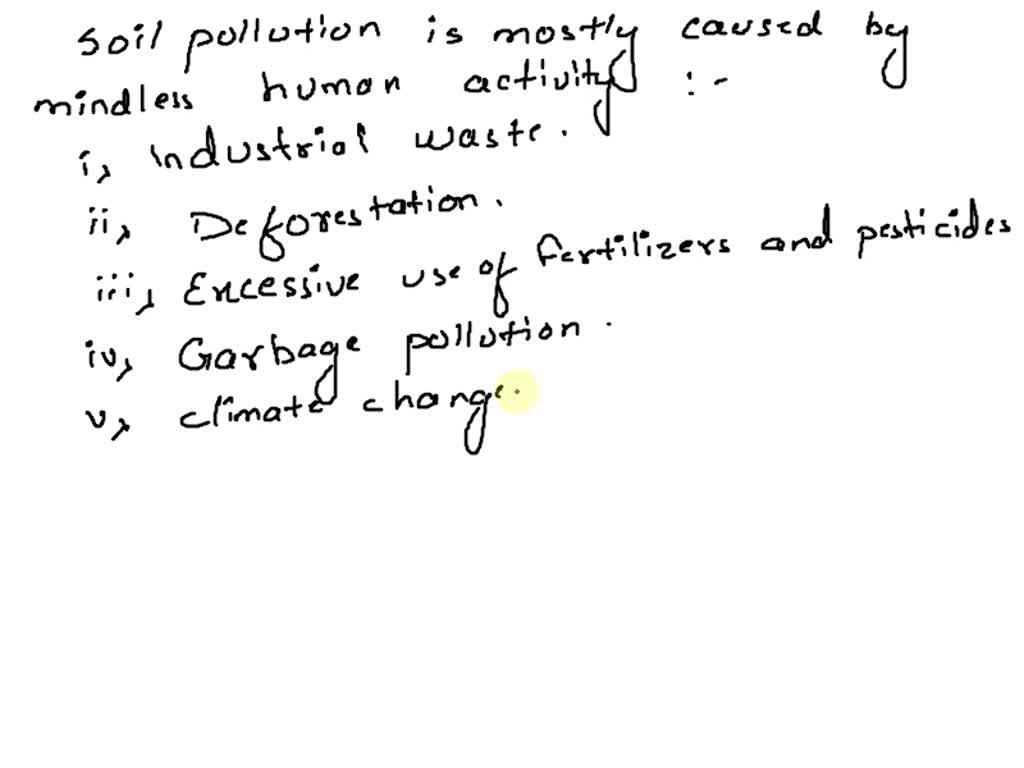Soil pollution, also known as soil contamination or soil degradation, is the process of introducing harmful substances into the soil, resulting in the deterioration of its quality and fertility. These substances can be either natural or man-made, and they can come from a variety of sources, including agricultural practices, industrial activities, and household waste.
One of the main causes of soil pollution is the use of chemical fertilizers and pesticides in agriculture. These substances can be highly toxic to plants and animals, and they can leach into the soil, contaminating it and reducing its ability to support life. In addition, the use of heavy machinery in agriculture can compact the soil, making it difficult for roots to penetrate and absorb water and nutrients.
Another common source of soil pollution is industrial activities, such as mining, manufacturing, and waste disposal. These activities can release a variety of toxic substances into the soil, including heavy metals, petroleum products, and chemicals. Additionally, the use of landfills for waste disposal can contaminate the soil with harmful substances, such as bacteria and viruses.
Household waste is also a significant source of soil pollution. When household waste is not properly disposed of, it can end up in landfills or in the environment, where it can contaminate the soil and water. For example, if household chemicals are not disposed of properly, they can leak into the soil and contaminate it.
The effects of soil pollution can be far-reaching and long-lasting. It can lead to the loss of biodiversity, as contaminated soil may not be able to support a variety of plant and animal life. It can also affect the quality and safety of the food we eat, as contaminated soil may produce crops that are toxic or unsafe to consume. Additionally, soil pollution can have negative impacts on human health, as it can release harmful substances into the air that we breathe and the water we drink.
There are several ways that we can prevent and mitigate soil pollution. These include reducing the use of chemical fertilizers and pesticides in agriculture, properly disposing of household waste, and regulating industrial activities to prevent the release of harmful substances into the soil. Additionally, we can use techniques such as soil remediation and land restoration to clean up contaminated soil and restore its quality and fertility.
In conclusion, soil pollution is a serious problem that can have far-reaching consequences for the environment and human health. By understanding its causes and taking steps to prevent and mitigate it, we can protect the soil and preserve its vital role in supporting life on Earth.







